Opening Surveys
Bauer: Scandinavian B01
1.e4 d5 2.exd5 Qxd5 3.Nc3 Qa5 4.d4 Nf6 5.Nf3 Bg4
|

|
|
5...c6 is usually played in the mainline Scandinavian, but Christian Bauer is an expert in the development of the bishop to g4 and believes that this continuation is playable despite its bad reputation.
|
Marin: Caro-Kann B15
1.e4 c6 2.d4 d5 3.Nc3 g6 4.e5
|
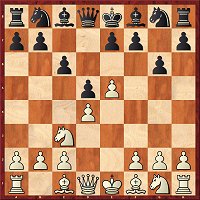
|
|
In this hybrid of the Caro-Kann and Pirc Defence, if White plays 4.e5 he usually follows up with f4. The best setup for Black then consists of, where possible, doing without ...Bg7 and playing instead ...f6, ...Nh6 and ...Bg4.
|
Bojkov: Sicilian B32
1.e4 c5 2.Nf3 Nc6 3.d4 cxd4 4.Nxd4 d5
|
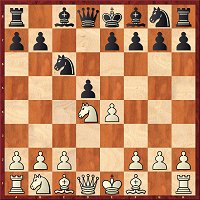
|
|
According to the analysis of Dejan Bojkov, the move 4...d5 is good for more than just a surprise. But there are hardly any variations in which White gets an advantage. It mostly comes down to an ending with White having a queenside superiority but in which Black has a strong centre.
|
Grivas: Sicilian B33
1.e4 c5 2.Nf3 Nc6 3.d4 cxd4 4.Nxd4 Qb6 5.Nb3 Nf6
|
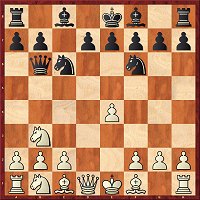
|
|
The Eros Variation brings together lines in which White does without 6.Nc3: there are the rather dubious pawn sacrifice 6.Be3 and the more interesting 6.Bd3. But nowhere does Black have serious problems and so 6.Nc3 must be a better choice.
|
Dembo: Sicilian B66
1.e4 c5 2.Nf3 Nc6 3.d4 cxd4 4.Nxd4 Nf6 5.Nc3 d6 6.Bg5 e6 7.Qd2 a6 8.0-0-0 Bd7 9.f3 h6 10.Be3 b5
|
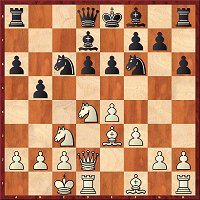
|
|
The author has a lot of experience with this variation and had good success with it in the Women's WCh in Antakya. This article gives deep insights into a demanding variation of the Sicilian Defence.
|
Moskalenko: French C02
1.e4 e6 2.d4 d5 3.e5 c5 4.c3 Nc6 5.Nf3 Qb6 6.Bd3
|
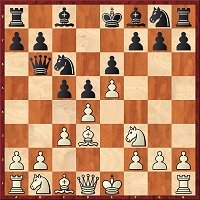
|
|
After 6.Bd3, accepting the gambit with 6...cxd4 7.cxd4 Bd7 8.0-0 Nxd4 is considered quite good for Black. But one is never safe from surprises and having a second ace up one’s sleeve can do no harm; for that reason Moskalenko also analyses 6...Nh6 7.0-0 cxd4 8.cxd4 Nf5.
|
Kritz: Ruy Lopez C72-C74
1.e4 e5 2.Nf3 Nc6 3.Bb5 a6 4.Ba4 d6
|
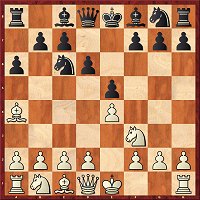
|
|
For the author it is clear that the only chances for an advantage for White in the Modern Steinitz Variation lie in 5.0-0. The main subject for his article is then 5...Bg4 6.h3 h5, and finally he manages to demonstrate a slight superiority for White.
|
Schandorff: Semi-Slav D43
1.d4 d5 2.c4 c6 3.Nf3 Nf6 4.Nc3 e6 5.Bg5 h6 6.Bxf6 Qxf6 7.e3 Nd7 8.Bd3 g6 9.0-0 Bg7 10.e4 dxc4 11.e5 Qe7 12.Bxc4 0-0
|
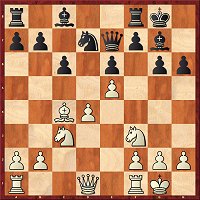
|
|
If Black captures on c4 too soon, this has disadvantages (shown in CBM 139). But even a later capture on c4 can be exploited by White: with the intermediate move 11.e5. Schandorff examines whether this really brings an advantage.
|
Hazai/Lukacs: Semi-Slav D43
1.d4 d5 2.c4 c6 3.Nf3 Nf6 4.Nc3 e6 5.Bg5 h6 6.Bxf6 Qxf6 7.a3
|
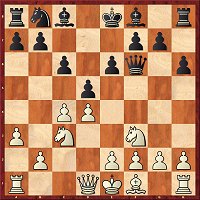
|
|
In the Ubilava Variation with 7.a3 White would like to play e2-e4 without being disrupted by a check on b4. But Black can exploit the loss of a tempo – best of all with 7...dxc4. After 8.Ne5 probably the old move 8...c5! is still the best.
|
Skembris: Queen's Indian E15
1.d4 Nf6 2.c4 e6 3.Nf3 b6 4.g3 Ba6 5.Qa4 c5 6.Bg2 Bb7 7.dxc5 bxc5 8.0-0 Be7 9.Nc3 0-0 10.Rd1 Qb6 11.Bf4
|
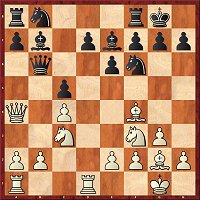
|
|
After the popular 5.Qa4 it frequently comes down to the position in the diagram (unless Black plays 7...Bxc5). There have been a lot of games at the top level and theory is still in flux. Skembris has had his own practical experience with the variation.
|
Postny: Nimzoindian E20
1.d4 Nf6 2.c4 e6 3.Nc3 Bb4 4.Nf3 c5 5.g3 cxd4 6.Nxd4 Ne4 7.Qd3 Nxc3 8.bxc3 Be7
|

|
|
If this variation is playable for Black, and that is what Postny’s analyses say, then one has not only a good setup against 4.Nf3, but also one against certain lines of the Catalan and the Symmetrical English Variation.
|
Kuzmin: Nimzoindian E46
1.d4 Nf6 2.c4 e6 3.Nc3 Bb4 4.e3 0-0 5.Nge2
|
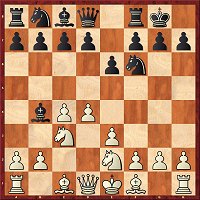
|
|
Although the player after whom the Rubinstein Variation 4.e3 is named always continued with Nge2, the move Nf3 became much more popular. Kuzmin’s article presents a few modern developments in the Nimzo-Indian with 5.Nge2 (to be continued in CBM 141).
|
Schipkov: King's Indian E80
1.d4 Nf6 2.c4 g6 3.Nc3 Bg7 4.e4 d6 5.f3 c6 6.Be3 a6
|
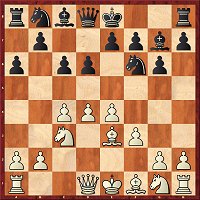
|
|
Schipkov shows several lines against the setup with ...c6 and ...a6 which should give White an advantage. As well as the traditional continuation 7.Bd3 both 7.c5 and even 7.g4 should bring Black some problems.
|